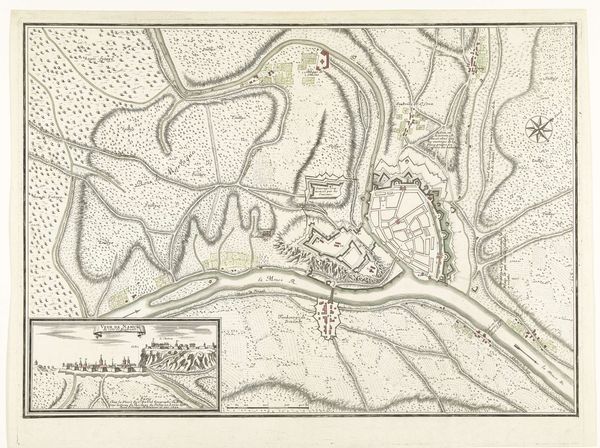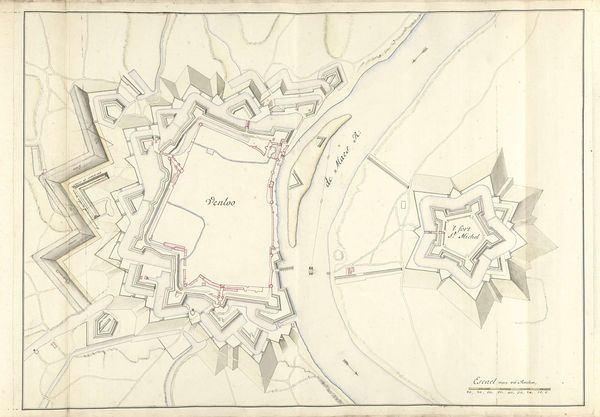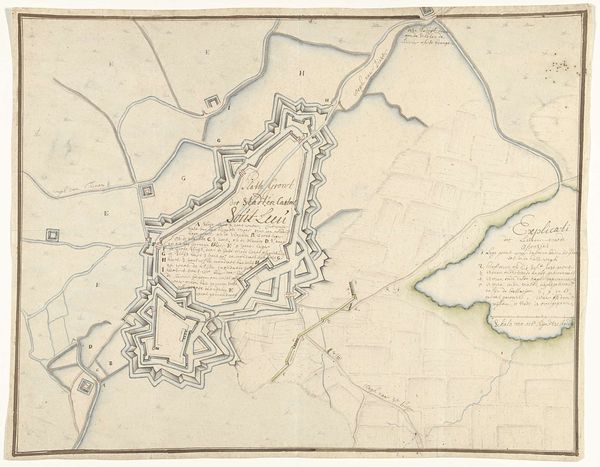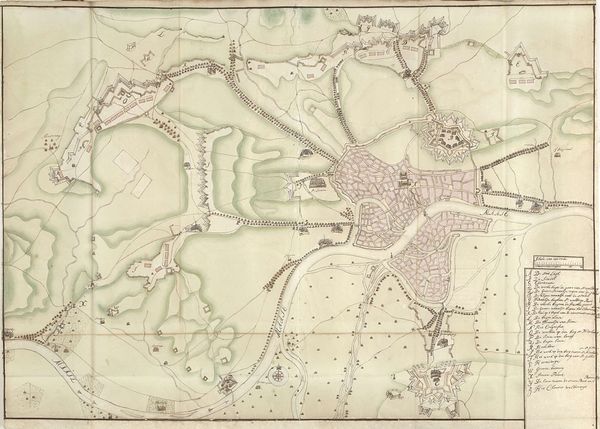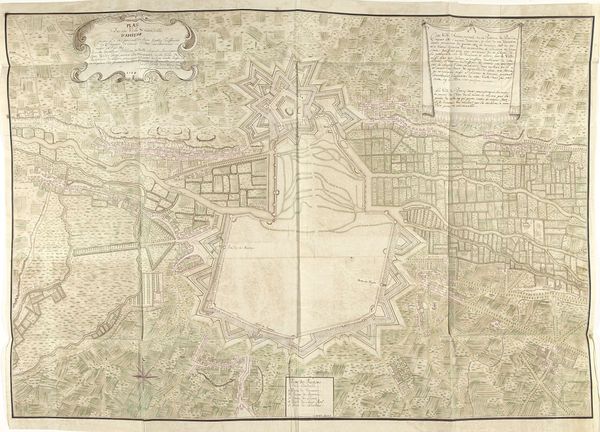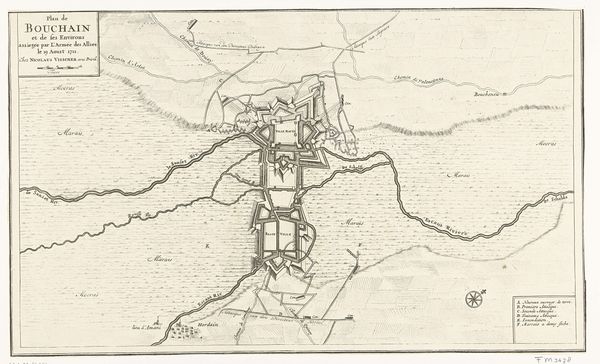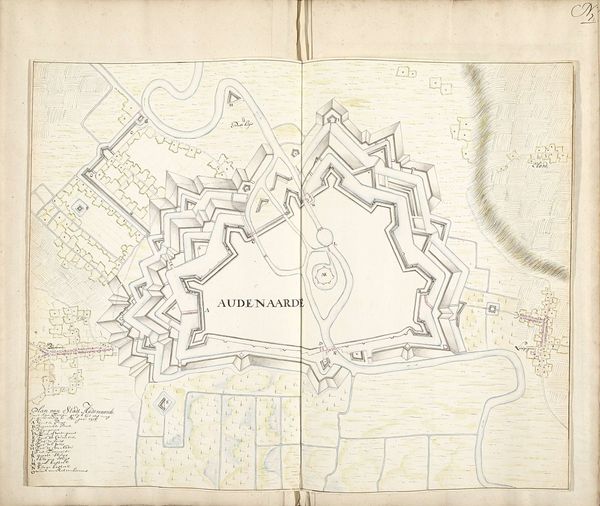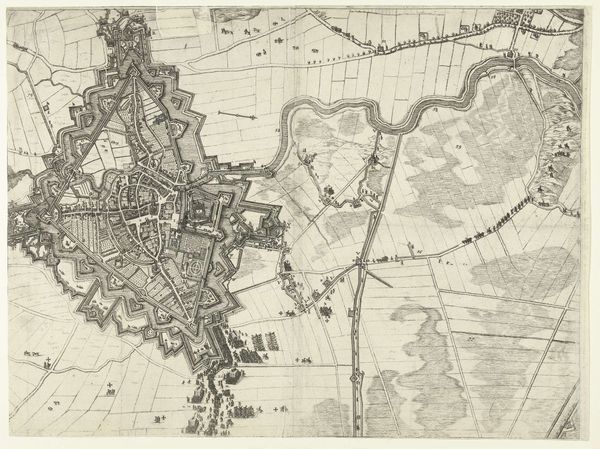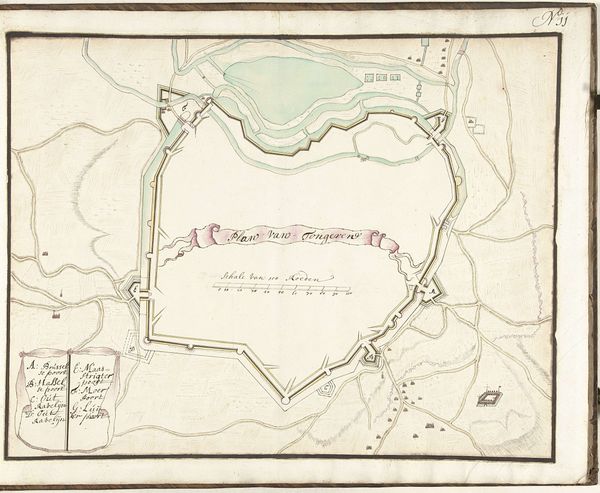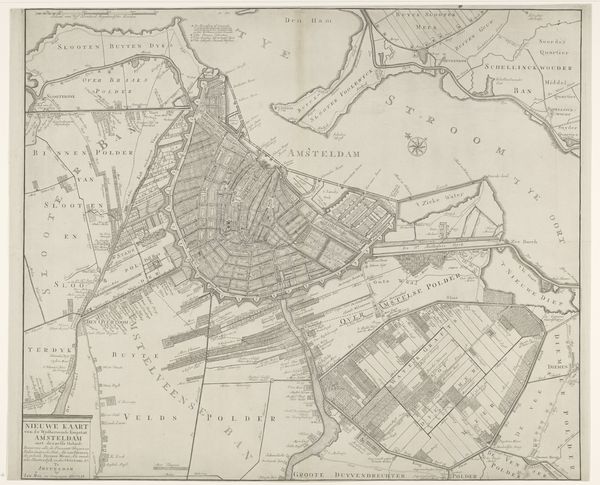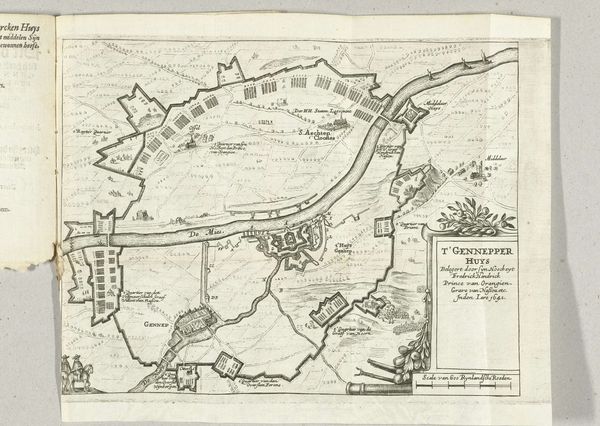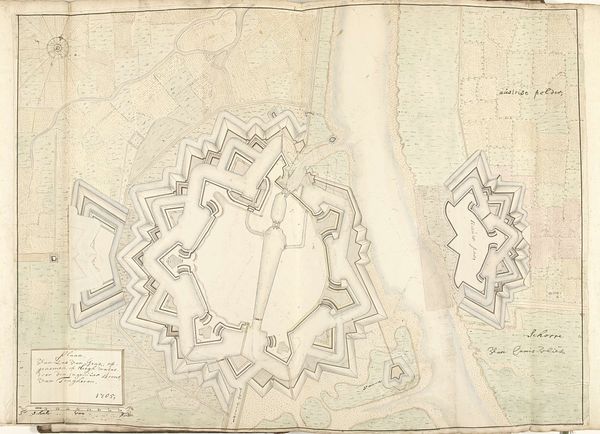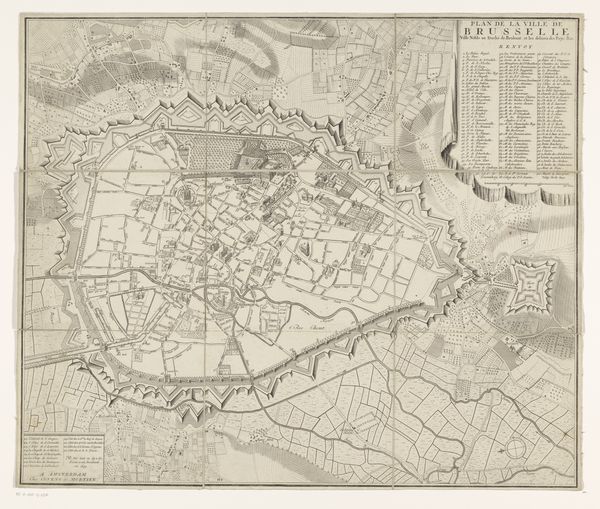
drawing, print, etching, ink
#
drawing
#
baroque
#
pen drawing
# print
#
pen illustration
#
pen sketch
#
etching
#
old engraving style
#
etching
#
perspective
#
ink line art
#
ink
#
geometric
#
cityscape
#
history-painting
Dimensions: height 530 mm, width 740 mm
Copyright: Rijks Museum: Open Domain
Curator: Here we have "Plattegrond van Roermond, 1705," a detailed town plan created using ink and etching by Samuel Du Ry de Champdoré. It dates back to the early 18th century. Editor: My first thought is... intricate. It feels almost like staring into the neural pathways of a sleeping giant, all these carefully etched lines defining streets and fortifications. There’s something unsettlingly precise about it, almost surgical. Curator: The precision is deliberate. As an iconographer, what can you read from the way Roermond is presented here? Editor: Well, firstly, notice how the town is surrounded by what appears to be complex defensive fortifications. This wasn’t just a map; it was a strategic tool. The river becomes both a resource and a potential point of entry or threat, doesn’t it? And these little crown symbols—the subtle markers of power. Curator: The baroque era often presented things with such grandiosity. Du Ry’s choice to focus so meticulously on these defences certainly reflects a deep concern with civic and military might. He isn't just mapping the city, but constructing a visual argument for its importance. Editor: Exactly. Think about the perspective here too. It’s elevated, detached—almost a God's-eye view. We're meant to survey, to comprehend, to perhaps even... control? This bird's-eye perspective enforces a sense of order and control. What I find more compelling, however, are those imperfections. The faint bleed of ink, the inconsistent lines. What story do they hold? Curator: Those imperfections, I think, speak to the human element, that the map exists despite its intended function as an object and an assertion of power. Even at the most rigorous attempt at depicting structure, there's a human expression to its chaos and emotion. What is so beautiful is the reality in the image's depiction of power, that every intention contains unintended elements. Editor: Beautifully put. Maps like this weren't simply about location. They embodied aspirations, fears, and a very particular way of seeing the world, captured in ink for centuries to ponder! Curator: I completely agree. I think it makes me want to explore the streets for myself, compare the historical layout with modern Roermond! Editor: Absolutely. I’d love to trace those old boundaries, see how the present reflects the past. What a fascinating experience to view a place through a looking glass.
Comments
No comments
Be the first to comment and join the conversation on the ultimate creative platform.
